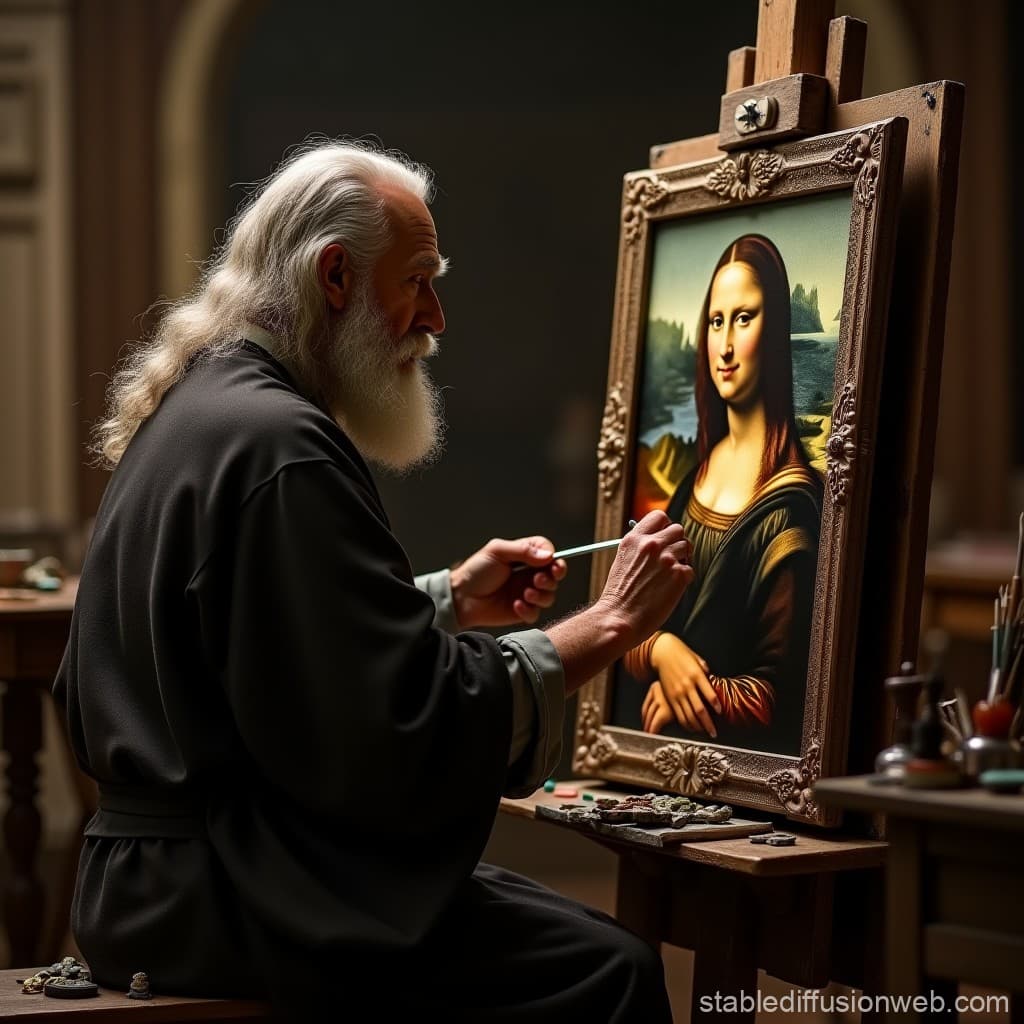
Portrait Painting Techniques: From Leonardo’s Sfumato to Expressive Strokes
Portrait painting, with its rich heritage and variety of techniques, not only reflects a person’s outward appearance but also their inner world, emotions, and character. Throughout the history of art, there have been many styles and methods that evolved depending on the era, artists, and cultural contexts. One of the most famous and influential techniques is sfumato, developed by Leonardo da Vinci. However, from this technique to the modern expressive strokes in portraits, a significant amount of time has passed. Let’s explore how these techniques evolved and what they brought to the art of portraiture.
Sfumato: The Mastery of Softness and Mystery
Sfumato, which in Italian means “smoky,” is one of the most famous techniques in painting, created by Leonardo da Vinci. This technique involves creating smooth transitions between light and shadow without clear lines, which gives the image airiness and depth. It was used to express the softness of facial features and convey an aura of mystery. The most vivid example of the use of sfumato is Mona Lisa, where the smoky lighting effect creates a sense of softness and natural liveliness of her face.
Sfumato became not only a technical tool but also a kind of philosophy in painting, where the artist was not simply depicting a form, but trying to convey its mystery and elusiveness. To achieve this effect, artists used thin brushstrokes and gradual blending of colors, which allowed them to create the illusion of soft skin texture and the liveliness of the portrait.
Sharp Lines and Realism: The Transition from the Renaissance to Baroque
After Leonardo da Vinci, the technique of sfumato continued to develop, but over time, artists began to look for ways to create more accurate and detailed representations of the human face. In the Baroque era, for example, artists started to focus more on realistic portraits, where the contours of faces and objects were clearly defined. The technique of contrasting light and shadow effects allowed artists to create depth and volume, as well as accentuate the facial expression.
One of the prominent artists of this style is Rembrandt. In his portraits, we can see his ability to create incredible skin textures and rich light-shadow transitions. However, instead of the softness found in sfumato, we see bright, expressive features that convey emotions and the inner world of the subjects.
Impressionism: Light and Movement in Portraits
In the late 19th century, art underwent significant changes with the advent of Impressionism. Artists like Claude Monet and Pierre-Auguste Renoir began working with new techniques that expressed not so much details and precision, but the sense of light and the moment. For Impressionists, an important aspect became conveying not so much the details of faces, but the atmosphere and emotional response to the scene.
When it comes to portraits, Impressionism also played a role in breaking classical conventions. Artists began using large, short brushstrokes without striving for strict accuracy. Faces became more about expressing emotions through color and form, rather than idealized features. In Renoir’s works, for example, we see portraits of people done in bright, lively colors, where the focus is not on the details but on the overall harmony of the composition.
Expressionism: Strokes that Shout Emotions
Expressionism in portrait painting appeared in the early 20th century, and its goal was to convey emotions, subjective perceptions, and the inner state of the subject through images of people. Expressionists like Edvard Munch and Oska Kokoschka used bright, contrasting colors and aggressive brushstrokes to express the deepest feelings and inner struggles. Unlike the Impressionists, who focused on light and movement, Expressionists often used distorted forms and exaggerated facial features to highlight emotional states.
Expressive brushstrokes allowed artists to create dynamic and emotionally charged images, which stood out due to their intensity and vividness. In the portraits of Expressionists, emotions became more important than the accuracy of the depiction. This was a time when art became a direct expression of the artist’s inner world, not just a copy of reality.
Modern Approaches: Merging Styles and Techniques
In the 21st century, portrait painting continues to evolve, and many contemporary artists experiment by merging various techniques and styles. Today’s masters, such as Jeff Koons and Hermann Nitsch, use both traditional and modern methods, even incorporating digital technologies to create paintings with a completely new approach. For instance, artists might combine elements of traditional sfumato with expressive brushstrokes or work with high-contrast lighting, much like in the Baroque era, but in more contemporary forms.
Modern portraits often turn out to be not only representations of appearance but also attempts to tell the story of a personality using complex techniques and styles that blur the boundaries of traditional approaches to depicting people.
Conclusion
Portrait painting, despite all the changes and innovations, remains one of the most expressive forms of art. From the softness and mystery of Leonardo’s sfumato to the bright and expressive brushstrokes of Expressionists, each era has added new elements to portraiture, reflecting not only a person’s outward appearance but also their inner world. Contemporary artists continue these traditions, creating portraits that increasingly raise questions about how we perceive and depict each other.